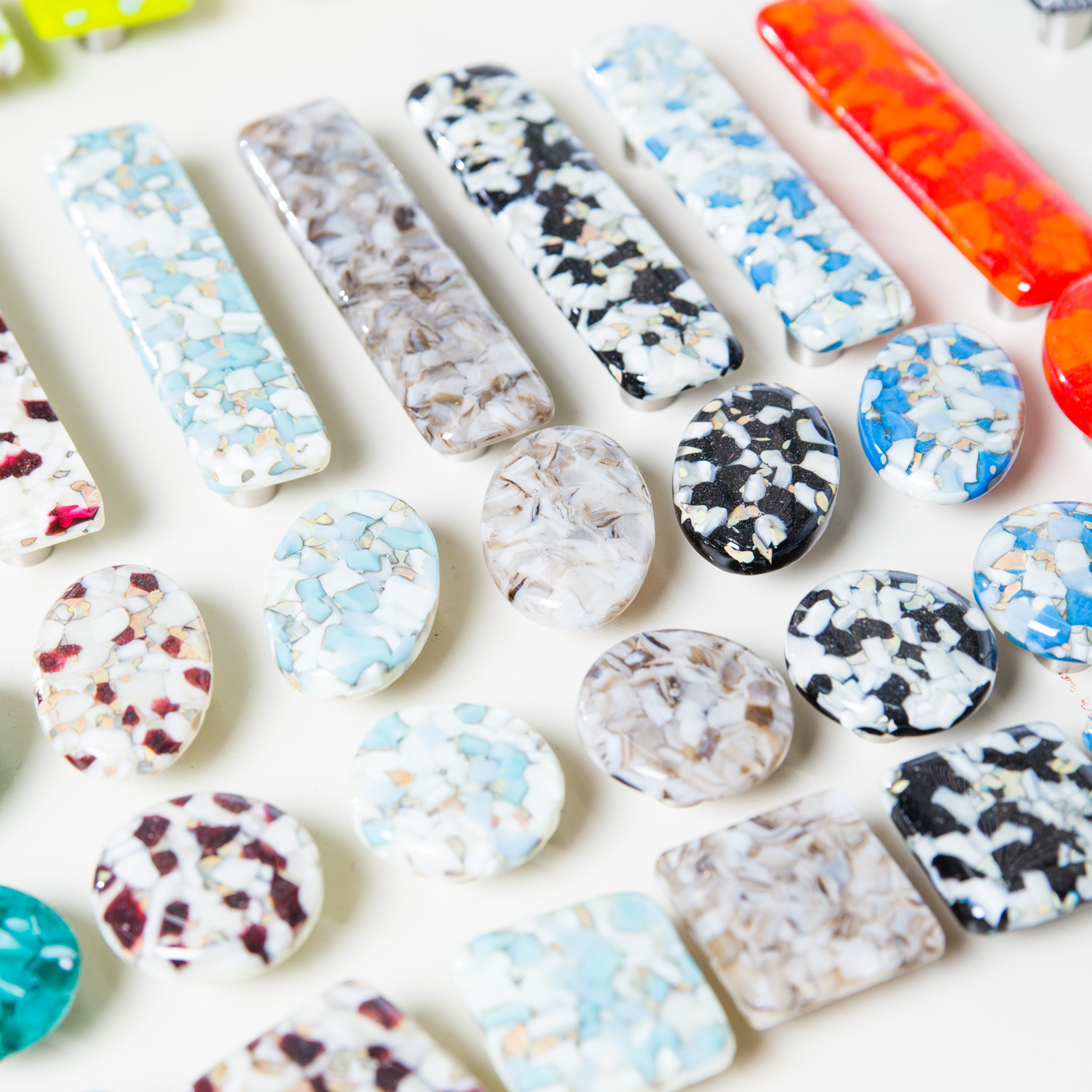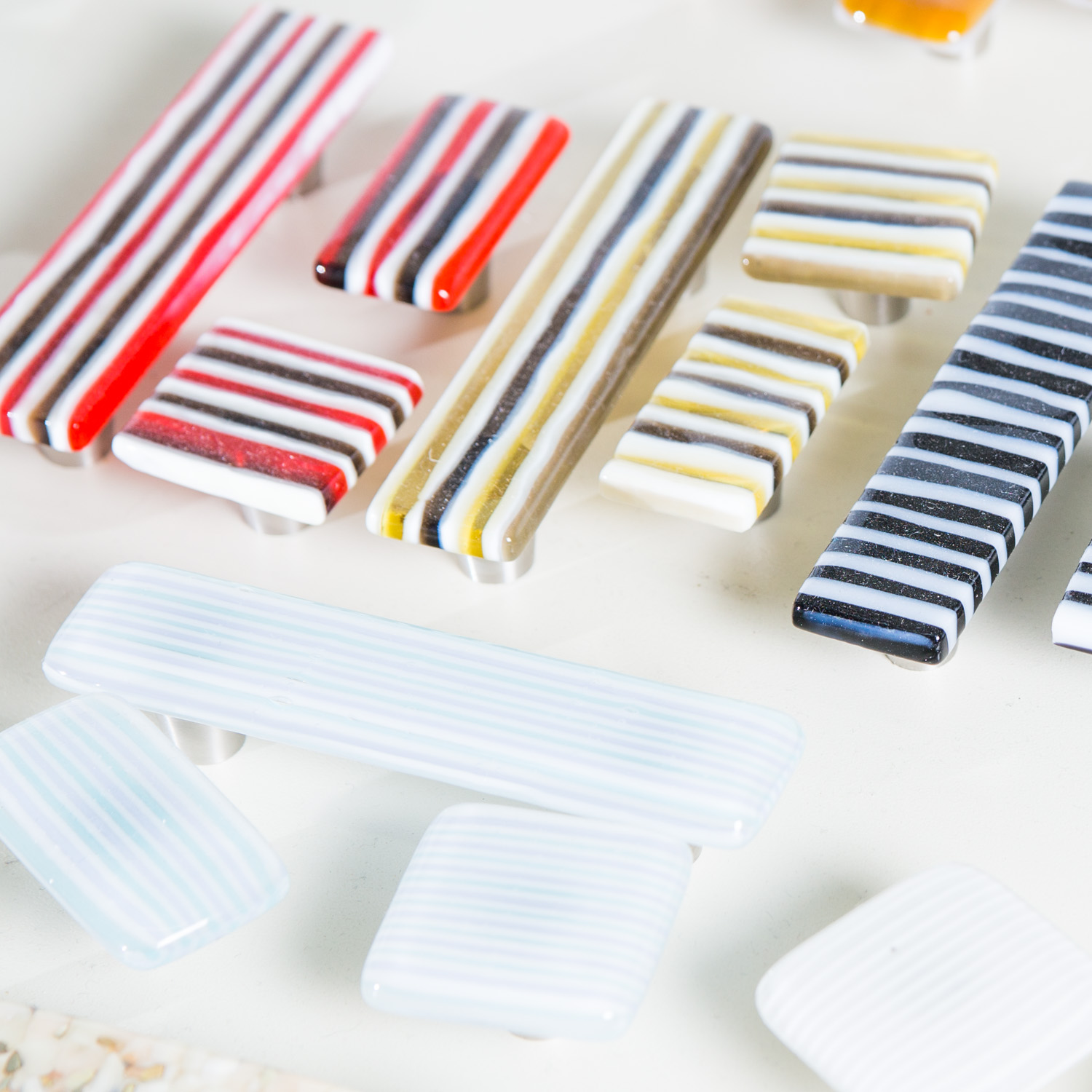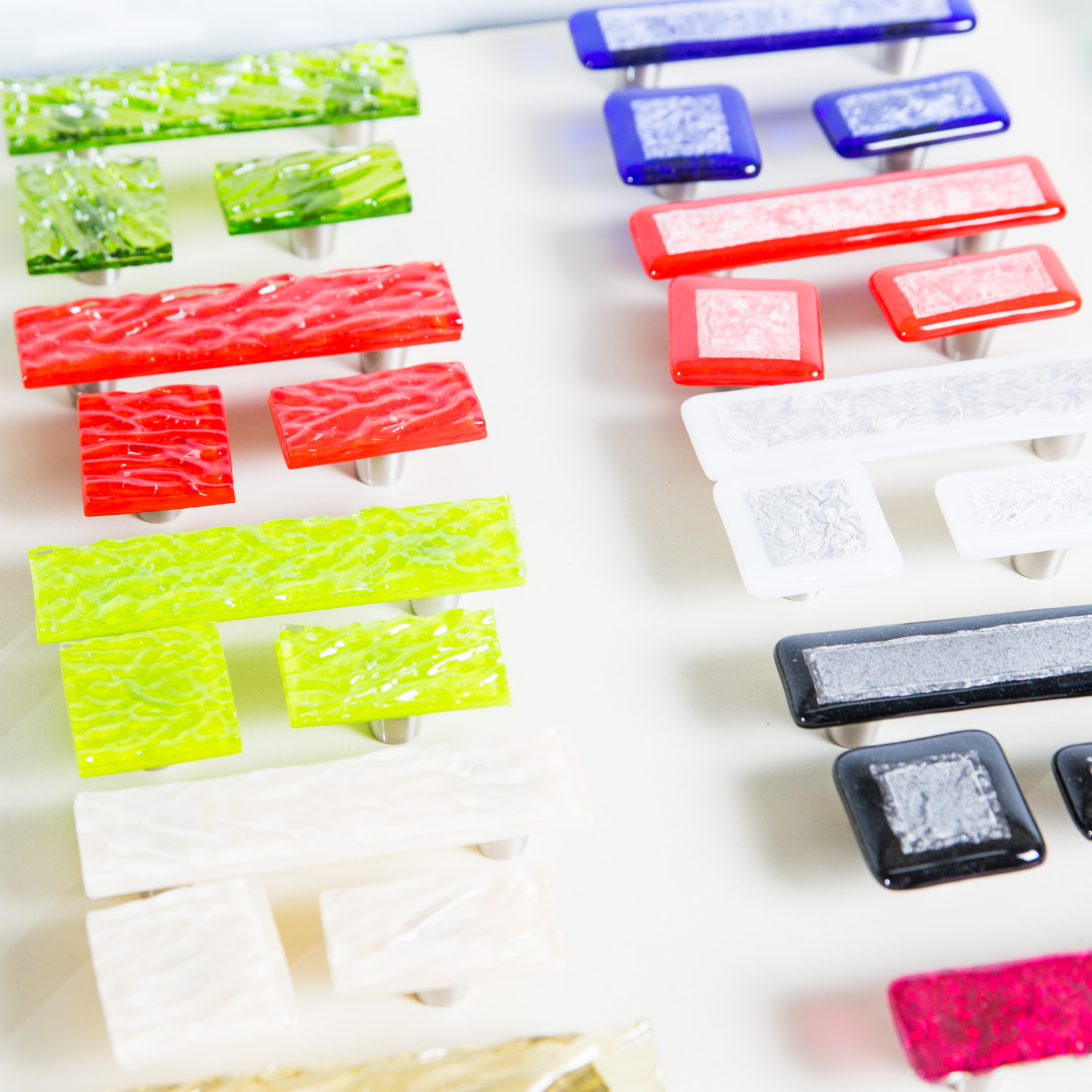Made in Michigan: Windborne Studios
Our Chat about Creativity, Design, And the Future of Windborne Studios
Some of us have been focused on a career in design since, it seems, birth. But Tammy Newhof of Windborne Studios arrived here later in life, via a less traditional path. This profession, she says, was a “happy accident.” When she and her husband decided to remodel their kitchen, it was a labor of love (and frugality). While he hand-painted their cabinets, she pitched in by making some glass knobs — and she was hooked.
“I just got busy and started to come up with different things that I thought would look good — and then I couldn’t stop. I absolutely loved it.”
As for us, we’re glad she didn’t stop. Tammy is now the successful proprietor or her own custom hardware company, which boasts clients from around the world — including a major hardware label that utilizes her artistry in its wildly popular glass hardware line. We couldn’t wait to hear more about the origin story of this creative leader. We recently visited her downtown Grand Rapids studio (greeted with homemade cookies) to learn more about her work, her inspiration, and the future of the brand.
Jennifer Butler Design: You said you came from a financial services family, and were an accountant. How did you end up in this industry?
Windborne Studios: I started by filling a need at home. When we remodeled our kitchen on a budget, my husband suggested that I use my skills as a glass fuser to come up with a solution to our challenge. In 2006, we debuted our product at the KBIS show in Chicago. We were the only vendor displaying fused glass cabinet hardware, and the show was an enormous success, with immediate interest in our products nationally and internationally. We were overwhelmed and, to be honest, had a difficult time turning a profit. We then stepped back, assessed our position, and decided to label and market our product as a boutique item, and limit our exposure to handpicked showrooms.
JBD: It feels serendipitous — like it was meant to be. What is your design process?
WS: I have two different design processes and philosophies. The first would be the evolution of product throughout Windborne’s existence — best illustrated in our Glassia line. This evolution process is one method I use in design. Another design process is based on current trends and color palettes, evident in the Pearl line.
I also believe in breaking all preconceived ideas, and coming up with something totally new that will set trends. I have strived for this in our Astratto and Classico lines. I am fortunate to have a good relationship with a casting facility. This allows me more design and manufacturing capabilities than most of the companies that are competing in the glass-only category.
JBD: How do you integrate sustainable practices into your design?
WS: Glass is a very recyclable resource. If we produce something that does not meet our standard, we will reuse that material in another product. Some of our “mistakes” turn into inspiration for new lines. We also use scrap glass to produce frit, and this is used in our top-selling line Pebbles.
JBD: How do you keep up with changes in your industry and the design community? What keeps you relevant?
WS: The hardware industry, as a whole, is very expansive. I have contact with many designers, as well as the founder of one of the country’s largest distributors, Schaub & Company. My relationship with them has been of great value to us, both.
For glass hardware, though, Windborne Studios really is setting the trends. Ever since the 2006 KBIS show, different manufacturers have been copying our products. It was frustrating, but in time I came to understand that they were copying old products. I am constantly moving ahead of their efforts to continue trendsetting. Recently we’ve been exploring unique glass / metal combinations, which really set us apart from those that do not have the resources to accomplish such intricate, specific designs.
I also find inspiration from other peers and artisans. While I can keep up with fashion and interiors, I also attend master glass fusing classes with some of the most renowned, talented people in this industry, and learn from them. And when I need to reboot, our Lake Michigan property and its natural beauty always inspire me with fresh ideas.
JBD: Of your work, what are you the most proud?
WS: I am the most proud of breaking creative, craft, glass-designed hardware into an industry that was used to being filled with mostly only metal. Now it has become a part of homes across the county. I am extremely grateful that each morning I wake up, I get to go to a studio and be creative, and help contribute to our family.
JBD: Yes! That’s incredibly powerful, that feeling of satisfaction that comes with creative success. How are you preparing for growth? What’s the next big thing we’ll see from you?
WS: I am laying the foundation for another major distributor. We are working on several new lines — one with glass, one with glass/metal and one new metal enamel line. We are also looking to grow with more international partners, and break into some major retail locations around the country. It’s all very exciting!
Learn more about Windborne Studios and get inspired for your own interior design project. From Harbor Country to Grand Rapids and beyond, Jennifer Butler Design is committed to partnering with artists and makers from all over MIchigan, who excel at their craft. Check out our feature on Lea Nigel Studios and check back as we continue to explore trendsetters and tastemakers within the design community.



